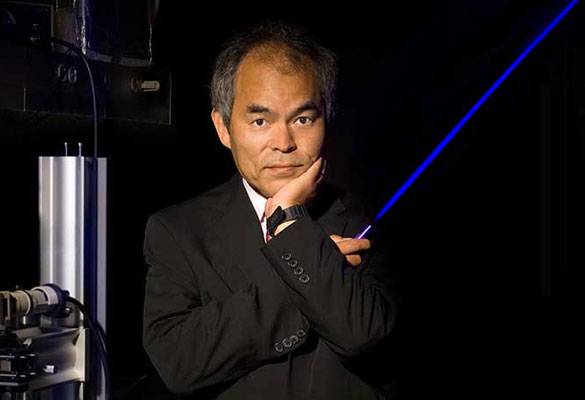The Long Road to the Blue LED Revolution
For over 30 years, major electronics companies raced to create the elusive blue light-emitting diode (LED). This crucial component was the missing link needed to unlock LED lighting and displays, a multi-billion dollar market. Despite huge investments of money and talent, no one could crack the challenge of producing a bright blue LED. That is, until one stubborn and ingenious engineer named Shuji Nakamura defied an entire industry and made the breakthrough.
Nakamura joined Japanese chemical company Nichia in the 1970s to work on LED research. At the time, red and green LEDs existed, but were mostly used in simple devices like calculators. Engineers knew that if they could add blue to the mix, LEDs could produce every color and replace inefficient incandescent and fluorescent bulbs. But blue was extraordinarily difficult to achieve using the crystal materials and production methods of the time.
By the late 1980s, Nakamura was ordered to give up his struggling efforts on blue LEDs. Yet he bravely disobeyed and kept working. He overcame three major obstacles that had stumped all others: creating high quality gallium nitride crystals, making this material effectively conduct positive and negative charges, and boosting light output power.
His key innovations included customizing a reactor to improve crystal growth, using heat to activate conductivity, and ingeniously layering advanced structures to increase brightness. In 1993, Nakamura demonstrated the first real blue LED, a major landmark that initiated the LED lighting revolution. His LED was over 100 times more intense than previous attempts.
Yet Nichia failed to properly reward Nakamura for an invention that came to generate billions in revenue. He left the company in 2000 and later sued them. After a protracted legal battle, Nakamura was awarded $8 million by the courts, a fraction of the value he created. The blue LED went on to enable a massive transformation in energy efficient and customizable lighting. LED bulbs last for years longer than traditional options, while using a fraction of the electricity.
Nakamura’s perseverance in overcoming a challenge that the top companies had declared impossible for decades highlights the immense value of determination, creativity and critical thinking. Rather than accepting defeat when faced with skepticism and obstacles, he cherished his independence of thought. Nakamura serves as an inspiration for how we can push the boundaries of what is believed achievable through self-reliance, ingenuity and passion.
The Key Innovations Behind the Blue LED Breakthrough
Shuji Nakamura made brilliant adaptations to crystal growth and LED device architecture to finally crack the challenge of the bright blue LED after 30 years of failed efforts. Here is an overview of his major technical achievements:
1. Two-Flow Reactor for Gallium Nitride Crystals
Nakamura invented a customized machine that enabled superior layered growth of the crucial blue LED material gallium nitride onto the substrate surface. Adding a second stream of gas pinned the reactant gases to the surface rather than drifting in the chamber. This yielded smooth, ultra high quality crystals essential for efficient LED function.
2. Magnesium Doping Activation Through Heating
To make a viable diode, both positively charged (p-type) and negatively charged (n-type) semiconductor layers are needed. Nakamura found that annealing (heating) magnesium doped gallium nitride activated conductivity by removing obstructing hydrogen atoms. This scalable process formed the long sought-after p-type material.
3. Ingenious Layered Architecture
Nakamura boldly tweaked his reactor to incorporate advanced structures in the LED design. He added a precisely tuned indium gallium nitride quantum well to increase bright light emission. And he capped the structure with an aluminum gallium nitride barrier layer to contain the flow of electrons. This complex recipe finally achieved an efficient blue LED.
Lasting Impact of Nakamura’s Perseverance
The blue LED unearthed by Nakamura against all odds has profoundly transformed lighting and displays. White LED lamps mixing blue, green and red now comprise over 50% of all lighting sales, replacing inefficient incandescent and fluorescent bulbs. Experts forecast this could rise to nearly 100% within 10 years.
The energy efficiency savings from switching to LED technology is equivalent to removing close to half the cars in the world. And prices have fallen low enough that LED bulbs pay for themselves within months. Nakamura’s breakthrough has even given rise to risks like blue light exposure from the ubiquity of LED screens. Yet his perseverance in overcoming skepticism through independent thinking serves as an inspiration. By defying the limitations imposed by others, Nakamura demonstrated the immense power of human creativity.


